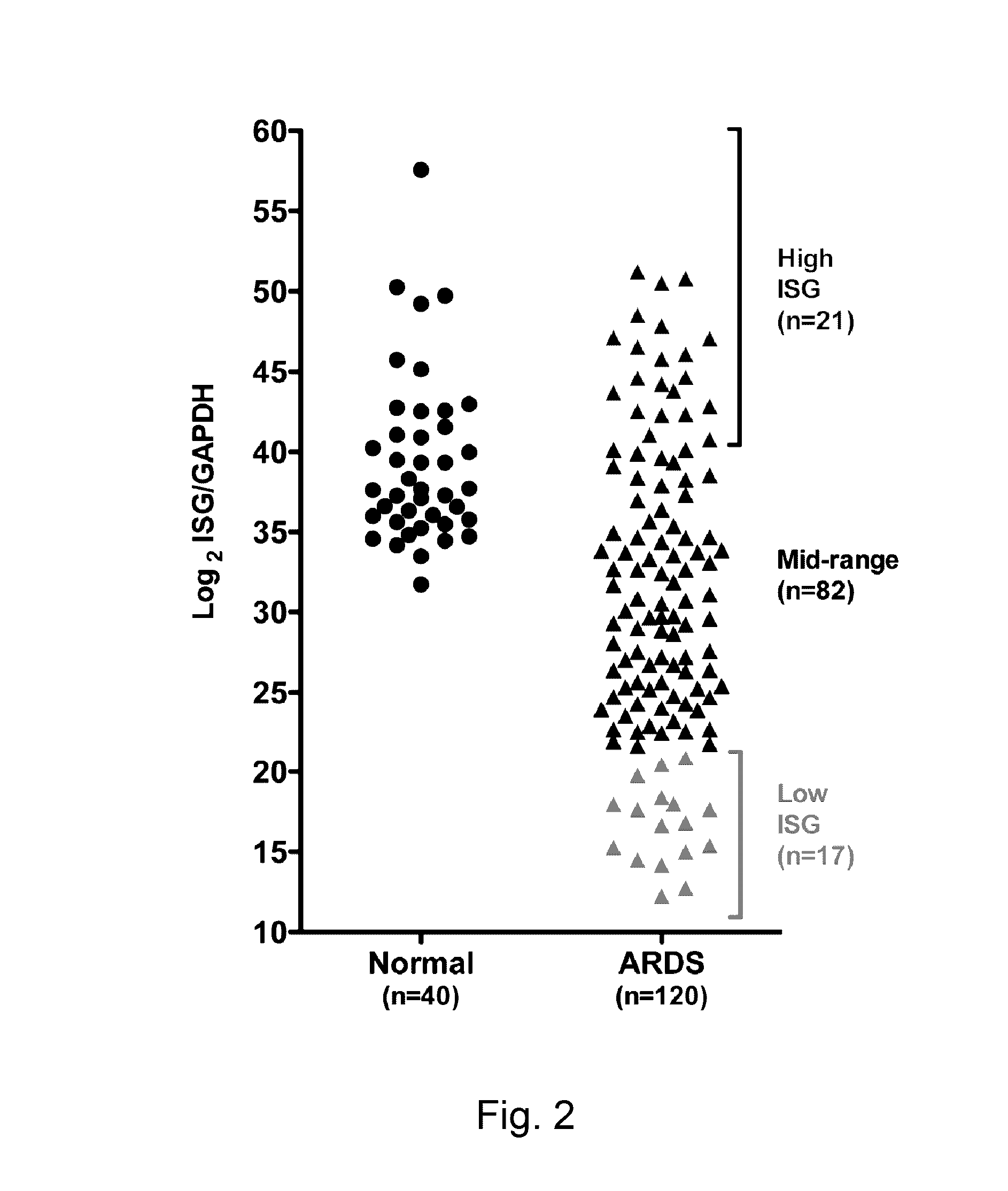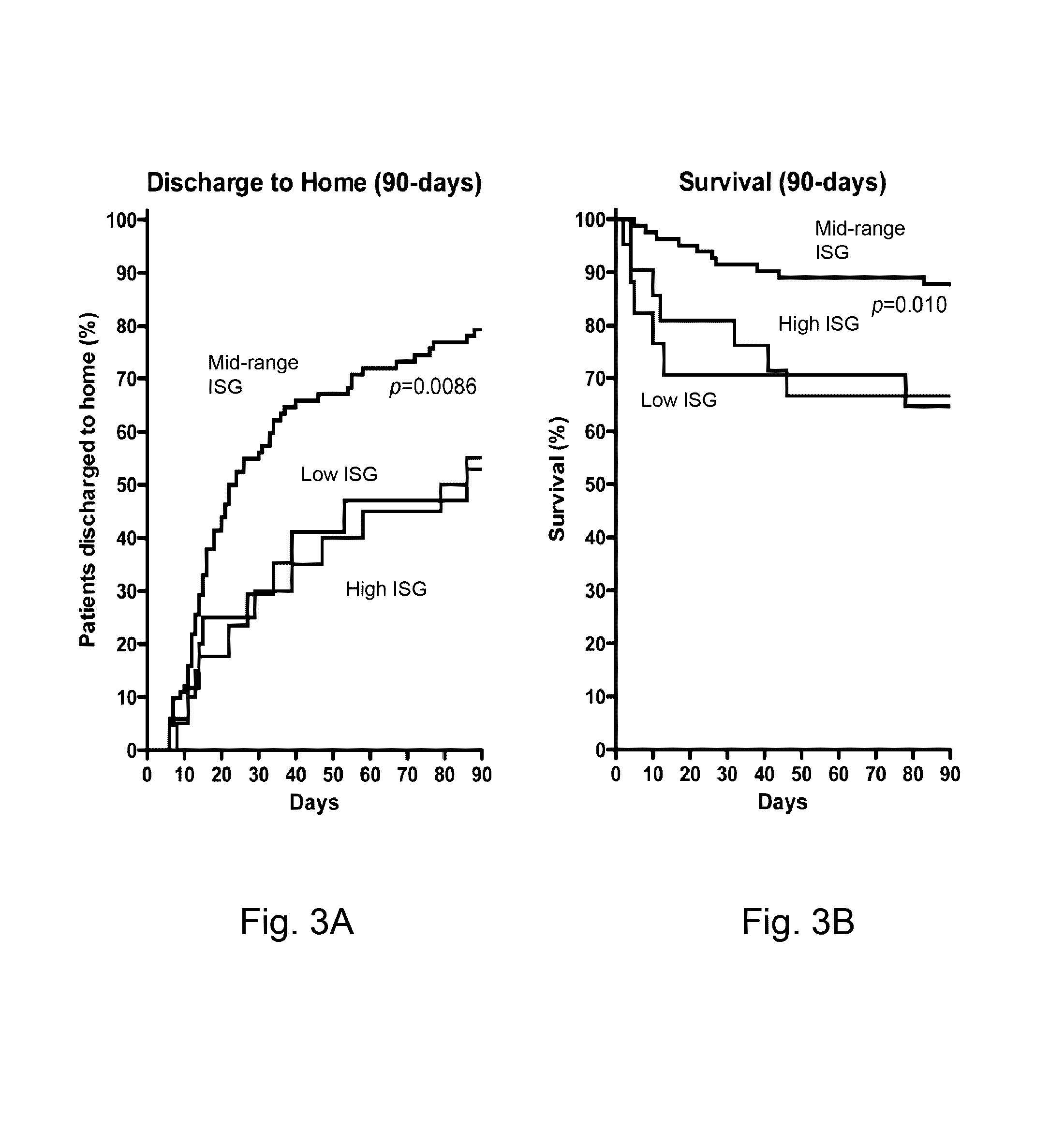Methods of identifying and treating subjects having acute respiratory distress syndrome
a respiratory distress syndrome and a technology for treating subjects, applied in the field of identifying and treating subjects with acute respiratory distress syndrome, can solve the problems of affecting clinical outcomes, putting the host at a disadvantage against other infectious agents or inflammatory insults, and neither sensitive nor specific to viral infection, and achieves no specificity for viral infection
- Summary
- Abstract
- Description
- Claims
- Application Information
AI Technical Summary
Benefits of technology
Problems solved by technology
Method used
Image
Examples
examples
Material and Methods
Study Enrollment
[0056]Training Set of ISG expression: Gene expression data from peripheral blood neutrophils isolated from patients with sepsis-induced ARDS (n=31) was used to form the training set. Neutrophils were isolated within 24 hours of meeting criteria for ARDS criteria. Gene expression analysis from a subset of this cohort were previously reported in an analysis of HMGB1 and LPS induced patterns of gene expression in ARDS (Brazma A, et al. (2001) Minimum information about a microarray experiment (MIAME)-toward standards for microarray data. Nat Genet 29: 365-371.). Gene expression data was also analyzed from healthy volunteers (n=19).[0057]Test Set of ISG expression: Prospective evaluation of ISG expression from circulating neutrophils of ARDS patients (n=120) was performed on patients enrolled into one of four NHLBI ARDS Network studies. The parent studies were: Drug Study of Albuterol to Treat ALI (ALTA, ClinicalTrials.gov Identifier: NCT00434993) (Mat...
PUM
| Property | Measurement | Unit |
|---|---|---|
| altitude | aaaaa | aaaaa |
| size | aaaaa | aaaaa |
| host resistance | aaaaa | aaaaa |
Abstract
Description
Claims
Application Information
 Login to View More
Login to View More - R&D
- Intellectual Property
- Life Sciences
- Materials
- Tech Scout
- Unparalleled Data Quality
- Higher Quality Content
- 60% Fewer Hallucinations
Browse by: Latest US Patents, China's latest patents, Technical Efficacy Thesaurus, Application Domain, Technology Topic, Popular Technical Reports.
© 2025 PatSnap. All rights reserved.Legal|Privacy policy|Modern Slavery Act Transparency Statement|Sitemap|About US| Contact US: help@patsnap.com



